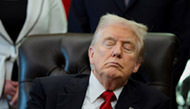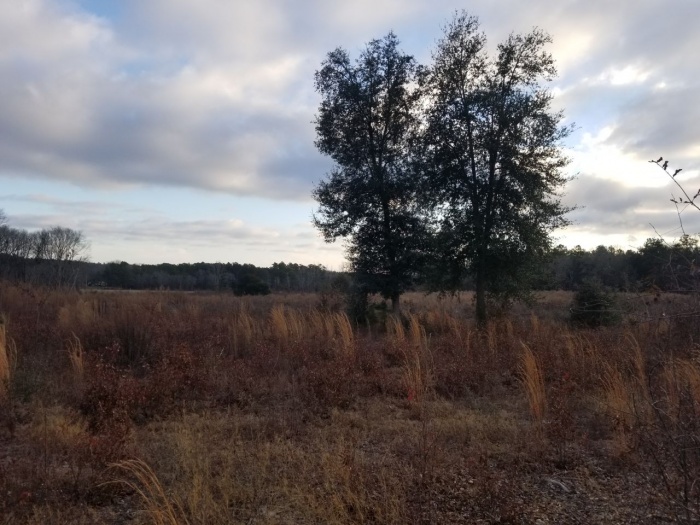In the spring of 2010 he was allowed to film in the Chauvet cave in southeastern France, where archaeologists have found exquisite wall paintings some 32,000 years old, the oldest ever discovered, and the result is a 90-minute documentary called “Cave of Forgotten Dreams.”
“Cave of Forgotten Dreams ” opens April 29 in New York, Chicago and Los Angeles and has already been screened at festivals in Germany, Britain, Hong Kong and Argentina. Shot in 3-D, it is, at least in Mr. Herzog’s view, an attempt to address a mystery and offer a glimpse into a world that 21stcentury humans can never hope to understand. He wants the spectator to share the childlike wonder he felt when he saw woolly rhinos, mammoths, bison, lions and horses staring at him from the walls of the Chauvet cave.
“There is a certain strange, palpable power from these images, and it’s not only that the paintings are so accomplished,” said Mr. Herzog, 68 . “ What you are witnessing is the origin of the modern human soul and the beginning of figurative representation.”
“Cave of Forgotten Dreams” was inspired by “First Impressions,” an article written by Judith Thurman for The New Yorker and published in 2008. But she, like the many filmmakers who had also petitioned the French government since Chauvet was discovered in 1994, never got permission to enter the cave and was forced to work from drawings and videos at the site.
Mr. Herzog succeeded where others failed, said Erik Nelson, the film’s producer, by becoming a temporary employee of the French government (for the symbolic payment of 1 euro) and giving France’s Ministry of Culture copies of the raw footage for noncommercial purposes.
Even so, the shoot faced formidable restrictions. Mr. Herzog was permitted to work with a crew of only three - he did the lighting himself - and none of the filmmakers could step off the one-half-meter-wide walkway that runs the length of the cave. As a result, he and the crew members are visible in some of the scenes.
Because of concerns about toxic carbon dioxide accumulations and exhalations contributing to mold on the cave walls, a problem that has developed in other caves with Paleolithic art, he was also limited to shooting no more than four hours a day over six days.
“It became immediately clear that the film should be in 3-D because of the very dramatic interior of the cave,” Mr. Herzog recalled. “Not only are there stalactites and stalagmites and columns of crystal cathedrals, but you have a whole drama of formations, of bulges and niches and undulations, and all this was utilized by the painters 32,000 years ago.”
Ms. Thurman said that she had seen “Cave of Forgotten Dreams” twice, at festivals. What particularly impressed her, she said, was the way Mr. Herzog evoked a feeling similar to the one she imagines “the painters themselves, and their audience, whoever they were,” must have felt viewing the paintings by flickering torchlight, which gives the animals portrayed the appearance of both depth and movement.
“I think the 3-D is an essential element, a real stroke of brilliance and imagination, and the slow revelation of the paintings themselves is staggeringly beautiful,” she said. Ms. Thurman points to “tangents” in the film, like a section in which Mr. Herzog speculates about how albino crocodiles might perceive the cave . “ It’s not a straight documentary,” she said.
“That strangeness is his signature, his handprint,” like the one Mr. Herzog shows on a wall of the cave. Mr. Herzog openly mocks the cinema verite school of documentary filmmaking. “I insist that even if you make documentaries, we are filmmakers, and we must never be flies on the wall, unobtrusive and just registering,” he said. “As filmmakers we should be the hornets that go out and sting.”
It is hard to escape the notion of a majestic historical symmetry infusing “Cave of Forgotten Dreams.” It’s been eons since paintings first began to grace the walls of Chauvet, and there’s no telling when another visual artist will be allowed in again.
By LARRY ROHTER
“Werner is the first artist to muck about in that cave in 30,000 years,” Mr. Nelson said. “Just think of it: This is the first time someone has created art in that cave since the original painters.”
스마터리빙
more [ 건강]
[ 건강]이제 혈관 건강도 챙기자!
[현대해운]우리 눈에 보이지 않기 때문에 혈관 건강을 챙기는 것은 결코 쉽지 않은데요. 여러분은 혈관 건강을 유지하기 위해 어떤 노력을 하시나요?
 [ 건강]
[ 건강]내 몸이 건강해지는 과일궁합
 [ 라이프]
[ 라이프]벌레야 물럿거라! 천연 해충제 만들기
 [ 건강]
[ 건강]혈압 낮추는데 좋은 식품
[현대해운]혈관 건강은 주로 노화가 진행되면서 지켜야 할 문제라고 인식되어 왔습니다. 최근 생활 패턴과 식생활의 변화로 혈관의 노화 진행이 빨라지고
사람·사람들
more
[인터뷰] “미국 최고의 중학생으로 교육할 것”
LA 한인타운 내 최초의 한인 운영 수학·과학 중학교인 ‘윈저 아카데미’(WMSA, 4055 Wilshire Blvd. #400, LA)가 지…

KAF, 23개 비영리단체에 22만여불 지원
LA에 본부를 둔 커뮤니티 재단 KAF(Korean American Foundation·이사장 존 임)가 지난 5일 EK 갤러리에서 ‘2025…
“1세대 부모님 잘 케어하기”
한인 1세대 부모를 모시고 2세대 자녀를 키우고 있는 이른바 ‘샌드위치 세대’ 한인들을 위해 노부모를 잘 케어하기 위한 각종 정보를 총망라해 …
“이념 넘어 상호 존중, 한반도 평화의 기반”
장병우 LA 평통 신임회장이 평통의 역할을 강조하고 있다. [박상혁 기자]“이념보다 중요한 건 상호 존중입니다. 서로를 인정하는 데서 한반도 …
센터메디컬그룹 제4회 ‘이웃섬김’ 시니어 골프대회…
센터메디컬그룹(Center IPA)이 주최한 제4회‘이웃섬김’ 시니어 골프대회가 지난 3일 부에나팍의 로스 코요테스 컨트리클럽에서 130여 명…
많이 본 기사
- 트럼프, ‘관세’ 여론전… “1인당 최소 2천불 배당금 지급”
- ‘집단 커닝’ 의혹에 뒤집힌 연세대…캠퍼스 닥친 ‘AI 카오스’
- 인디애나서 주소 잘못 찾아간 청소업체 직원, 현관 뚫고 나온 총알에 즉사
- 김건희 일가·이배용 前국교위원장 겨누는 특검…금주 재출석
- 中, 갈륨·게르마늄·안티몬·흑연 對美수출통제 1년 유예
- 반군출신 시리아 대통령 워싱턴 도착…유엔 제재 해제 이틀만
- 내란특검, ‘외환 의혹’ 금주 기소…조태용 前국정원장 구속 기로
- ‘졸린 바이든’ 조롱하더니…트럼프, 집무실 행사서 비몽사몽
- ‘손흥민 결승 맞대결 유력’ 메시, 2골 1도움 ‘하드캐리’→PO 4강 진출... ‘평점 10점 만점’ 맹활약
- ‘325억 건물주’ 이다해, 역시 럭셔리 그자체..♥세븐 생일 파티
- 백악관 “이달말까지 셧다운지속시 4분기 마이너스 성장 가능성”
- “방탄소년단 진이 생명을 구하는데 일조하고 있습니다”..美 심장협회
- “개인주의로 외로움 느끼는 미국인들 K-콘텐츠로 힐링”
- ‘대장동’ 국조 카드 동시에 꺼내 든 여야…동상이몽에 성사 미지수
- ‘통산 6회 우승’ 페이커 ‘끝끝내’ e-스포츠 새 역사 썼다! T1, KT 꺾고 롤드컵 ‘스리핏’
- 애틀랜타 총영사관, 조지아 韓기업에"비자·입국심사 유의"
- “화제는 됐지만”… ‘초슬림’ 아이폰 에어 판매 부진
- 화이자, 100억불 규모 비만약 인수전 승리…멧세라 인수
- 韓, 정년 1년 늦추면 고령 정규직 5만명 은퇴 미뤄질 듯
- 테일러로 모이는 삼성 협력사…반도체 생태계 구축 ‘탄력’
- 미국·볼리비아, 17년만에 대사급 외교관계 복원
- “ ‘8년 여친’ 이선빈과 결혼 안 해? 헤어질 거야?” 이광수, 돌직구 폭격에 “결별 NO” 외쳤다
- 워싱턴DC 풋볼팀 새 구장 이름에 트럼프?… “본인이 원해”
- 트럼프 눈치 봤나…EU·중남미 회의에 정상 대거 불참
- ‘무면허운전’ 정동원, 검찰 기소유예로 재판 면해
- 젠슨황 “하이닉스·삼성서 샘플 받아…TSMC에 웨이퍼 추가 주문”
- “SF 외야에 스타급 선수 부족” 그럼 이정후는? ‘3억$ 예상’ 외야수 영입설까지, 중심 이동하나
- 오은영, 러브 스토리 공개.. “서로에게 첫사랑..귀여운 건 못 이겨”
- 워싱턴DC 풋볼팀 새 구장 이름에 트… 1
- 이강인 ‘대단한 UCL 기록’ 남겼다, 교체로만 4경기 출전→기회 창출 ‘전체 6위’
- 최태원 “운영개선과 본업 지식 쌓아야 AI 주도권 잡을 수 있어”
- 中, 연일 푸젠함 띄우기… “서방 100년 노력, 10년 만에 완수”
- 김건희특검서 8시간 대질한 오세훈 “평행선”·명태균 “쟁점 정리”
- “아르헨티나, 미국과 철강·알루미늄 무관세 수출 협상 중”
- 상원 ‘셧다운 해법’ 논의 공전…트럼… 1
- 백악관 대변인, 트럼프 연설 조작 의… 1
- 인도, 美와 무역협상 중 美 전투기엔진 대량도입 계약
- ‘대장동 항소 포기’ 검찰 내부반발 계속…”범죄수익 환수 막혀”
- 잇단 빅테크 감원 속…해고 통보에 기밀 빼돌린 인텔 직원
- 美, 남아공 G20 전면 보이콧…트럼프 “나도, 당국자도 불참”
- 연방대법, ‘저소득층 식비지원금 전액 지급 판결’ 일단 제동
- ‘12년 만의 우승 도전’ 신지애, 3R 공동 6위... 윤이나 ‘첫 톱10’ 가능성 ‘31계단 점프’
- 지현우, 연애도 썸도 NO..송은이 “이상형이지만 너무 슴슴해”
- 상원 ‘셧다운 해법’ 논의 공전…트럼프 “필버 폐지” 거듭 압박
- 미국, UN 인권심의 불참… “중국·베네수 훈계들을 생각 없다”
- ‘압도적’ 신유빈, WTT 챔피언스 3-0 대승→손쉽게 8강 진출... 연속 4강 도전
1/5지식톡

-
 테슬라 자동차 시트커버 장착
0
테슬라 자동차 시트커버 장착
0테슬라 시트커버, 사놓고 아직 못 씌우셨죠?장착이 생각보다 쉽지 않습니다.20년 경력 전문가에게 맡기세요 — 깔끔하고 딱 맞게 장착해드립니다!장착비용:앞좌석: $40뒷좌석: $60앞·뒷좌석 …
-
 식당용 부탄가스
0
식당용 부탄가스
0식당용 부탄가스 홀세일 합니다 로스앤젤레스 다운타운 픽업 가능 안녕 하세요?강아지 & 고양이 모든 애완동물 / 반려동물 식품 & 모든 애완동물/반려동물 관련 제품들 전문적으로 홀세일/취급하는 회사 입니다 100% …
-
 ACSL 국제 컴퓨터 과학 대회, …
0
ACSL 국제 컴퓨터 과학 대회, …
0웹사이트 : www.eduspot.co.kr 카카오톡 상담하기 : https://pf.kakao.com/_BEQWxb블로그 : https://blog.naver.com/eduspotmain안녕하세요, 에듀스팟입니다…
-
 바디프렌드 안마의자 창고 리퍼브 세…
0
바디프렌드 안마의자 창고 리퍼브 세…
0거의 새제품급 리퍼브 안마의자 대방출 한다고 합니다!8월 23일(토)…24일(일) 단 이틀!특가 판매가Famille: $500 ~ $1,000Falcon: $1,500 ~ $2,500픽업 & 배송직접 픽업 가능LA…
-
 바디프렌드 안마의자 창고 리퍼브 세…
0
바디프렌드 안마의자 창고 리퍼브 세…
0거의 새제품급 리퍼브 안마의자 대방출 한다고 합니다!8월 23일(토)…24일(일) 단 이틀!특가 판매가Famille: $500 ~ $1,000Falcon: $1,500 ~ $2,500픽업 & 배송직접 픽업 가능LA…
케이타운 1번가
오늘의 1면
오피니언

11·4 선거에 드러난 민심 직시해야

‘얌체’ 관행 끊고 평통의 품격 세워야
 조지 F·윌 워싱턴포스트 칼럼니스트
조지 F·윌 워싱턴포스트 칼럼니스트 [조지 F. 윌 칼럼] 빌 게이츠의 ‘기후 변화’에 대한 입장 변화
 손영아 문화 칼럼니스트·YASMA7 대표
손영아 문화 칼럼니스트·YASMA7 대표 [한국춘추] 펄먼 할아버지의 80년 인생 이야기
 김인자 시인·수필가
김인자 시인·수필가 [금요단상] “가을에 스며있는 지혜”
 김현수 / 서울경제 논설위원
김현수 / 서울경제 논설위원[만화경] 굿바이 딕 체니

[왈가 왈부] 막말·고성에 ‘배치기’까지… 선진화법 무색한 ‘동물국감’
 이상희 UC 리버사이드 교수 인류학
이상희 UC 리버사이드 교수 인류학 사소하지 않은 일상
 윤민혁 서울경제 실리콘밸리특파원
윤민혁 서울경제 실리콘밸리특파원 [실리콘밸리 View] MS 독점 벗어난 오픈AI, AWS 대형 계약
1/3지사별 뉴스

‘30대 사회주의자' 맘다니, 최초 무슬림 뉴욕시장 당선
초미의 관심을 모았던 뉴욕시장 본선거에서 조란 맘다니 민주당 후보가 승리하면서 역대 최초의 무슬림 뉴욕시장이 탄생했다. 초박빙 판세로 여겨졌던…
‘출구 못찾는’ 정부 셧다운…‘역대최장’ 36일 신기록

한국학교협 분쟁, 법원 선택은
메릴랜드 하워드카운티 순회법원이 5일 미 전역의 1,000여개 한글학교를 대표하는 뿌리교육 단체인 재미한국학교협의회(The National A…
구순 노인의 빛나는 역사 노익장

워싱턴DC 풋볼팀 새 구장 이름에 트럼프?… “본인이 원해”
도널드 트럼프 대통령이 워싱턴DC에 지어질 미국프로풋볼(NFL) 팀 워싱턴 커맨더스의 새 구장에 본인 이름을 넣기를 희망하고 있다고 스포츠 전…
봉사회 기금 모금 골프대회

오늘 하루 이 창 열지 않음 닫기 


















































.png)


댓글 안에 당신의 성숙함도 담아 주세요.
'오늘의 한마디'는 기사에 대하여 자신의 생각을 말하고 남의 생각을 들으며 서로 다양한 의견을 나누는 공간입니다. 그러나 간혹 불건전한 내용을 올리시는 분들이 계셔서 건전한 인터넷문화 정착을 위해 아래와 같은 운영원칙을 적용합니다.
자체 모니터링을 통해 아래에 해당하는 내용이 포함된 댓글이 발견되면 예고없이 삭제 조치를 하겠습니다.
불건전한 댓글을 올리거나, 이름에 비속어 및 상대방의 불쾌감을 주는 단어를 사용, 유명인 또는 특정 일반인을 사칭하는 경우 이용에 대한 차단 제재를 받을 수 있습니다. 차단될 경우, 일주일간 댓글을 달수 없게 됩니다.
명예훼손, 개인정보 유출, 욕설 등 법률에 위반되는 댓글은 관계 법령에 의거 민형사상 처벌을 받을 수 있으니 이용에 주의를 부탁드립니다.
Close
x